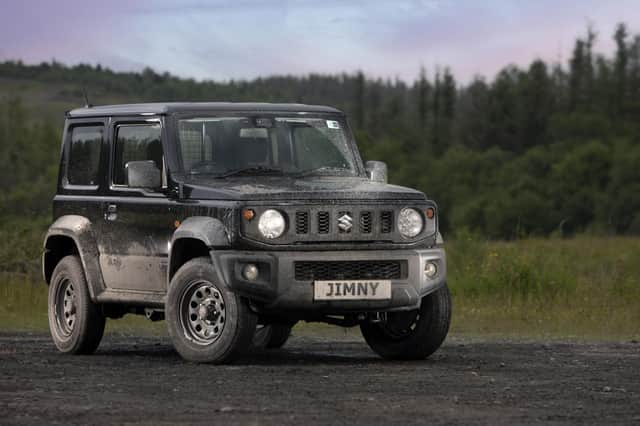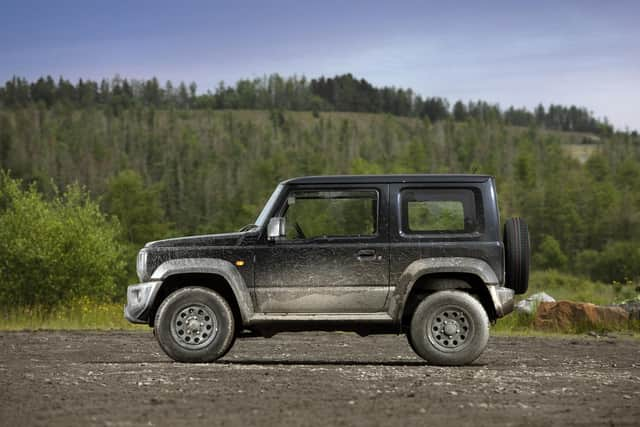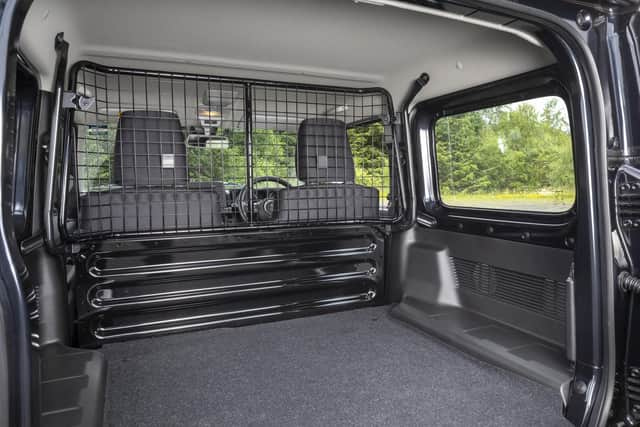Suzuki Jimny LCV review: an uncompromsing off-roader (apart from the compromises)


When the Suzuki Jimny relaunched in 2018, the chunky, utilitarian, retro-faithful styling and go-anywhere practicality earned the little off-roader an instant cult following.
Yet only two years into its run Suzuki announced the model would be withdrawn from sale in 2021, the Jimny’s emissions pushing the brand’s fleet average CO2 levels above the 95g/km Suzuki must achieve.
Advertisement
Hide AdAdvertisement
Hide AdEurope is a relatively small market for the Kosai-built Jimny and the decision to withdraw the model from sale rather than develop an all-new engine meant from 2020 dealers were down to existing stock only.


But that wasn’t the end of the story for the Jimny in the UK and Suzuki has given the little off-roader a nip and tuck and made it available from new as a light commercial vehicle.
Suzuki has had to make some alterations to the Jimny in order for it to qualify as a commercial vehicle, principally, the rear seats have been removed and the front seats moved forward slightly (10mm) to achieve a cargo area that’s 900mm in depth and has an 863-litre capacity.
The car’s footprint is, externally, unchanged, so despite officially making the cut as a van the Jimny is as dinky as ever. The compact dimensions are absolutely part of its charm, but the reduction of space in the front and the addition of a wire bulkhead behind the seats means long-legged drivers are going to find the cabin a squeeze.
Advertisement
Hide AdAdvertisement
Hide AdThe Jimny’s suitability as a van for transporting cargo will very much depend on the volume of cargo you’re looking to move. The flat floor means it’s more practical than a regular Jimny with the seats down but the maximum payload of 150kg is going to limit what you can carry.


Suzuki expects that the main market for the Jimny LCV to be the same as it was before the removal of the rear seats - off-road enthusiasts. The dimensions of the Jimny meant it was hardly the most practical car for transporting passengers anyway, but mechanically as capable as ever, the little off-roader is as tailor made for navigating rough terrain as anything on the market.
So how capable is the Jimny off-road? Very. With a ladder frame chassis, soft suspension, high ground clearance and approach, breakover and departure angles of 37, 28 and 49 degrees, respectively, it’s a tough little thing clearly more at home in a field than on the Tarmac.
The naturally aspirated, 100bhp 1.5-litre engine that forced Suzuki into a decision over the standard model is perfect for dragging the car up rough terrain and, while it’s quite high-revving, the Allgrip Pro 4WD system and low-range gearbox coped well over a challenging course in and around a former quarry during our test drive.
Advertisement
Hide AdAdvertisement
Hide AdThe Suzuki Jimny is designed from the ground up as an off-roader and it shows, whether you drive it on the road or up a Munro. Suzuki took an uncompromising approach to engineering the Jimny into a utilitarian tool that can climb mountains and that’s what earned the Jimny so many fans when it launched.


Is it any wonder then that, faced with the prospect of re-engineering the Jimny to reduce its emissions, Suzuki simply withdrew the passenger car from sale instead? That would have been a compromise.
Will removing the rear seats in a car that was too small to comfortably transport four grown ups - and wasn’t great on the road anyway - impact its sale to 4x4 enthusiasts? Probably not. Suzuki UK is set to receive around 480 Jimnys in 2021 and expects demand for those to be very high indeed.
The withdrawal of the passenger Jimny from sale pushed second hand prices of the £17k-from-new car above £25k. With the LCV Jimny available from £16,796 excluding VAT, or £19,999 including VAT, I expect Suzuki is right.
Suzuki Jimny LCV


Advertisement
Hide AdAdvertisement
Hide AdPrice: £16,796 (excluding VAT); Engine: 1.5-litre, four-cylinder, petrol; Power: 100bhp; Torque: 95 lb ft; Transmission: Five-speed manual, four-wheel-drive; Top speed: 90mph; 0-62mph: n/a; Economy: 36.7mpg; Emissions: 173 g/km; Towing weight (Braked): 1,300kg; Towing weight (unbraked): 350kg